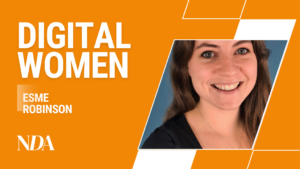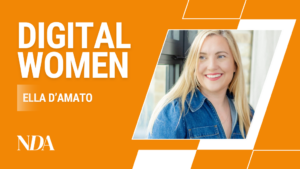By Rob Webster, Founder, Canton Marketing Solutions
Though some sceptics still exist, in housing is now in full swing. Major brands such as Vodafone, Disney, TSB and P&G have joined the many midsized retailers and travel companies that conduct the majority of their marketing activities in house. The growing trend of DTC companies will undoubtedly operate mostly in house as customer acquisition becomes a core competency.
This growing amount of spend that is dictated by brands rather than network agencies has huge implications for publishers which I hope and believe can help them improve their revenue prospects and ensure there is adequate funding for quality journalism.
Let’s look at the three major changes that are occurring as brands move buying in-house.
1) The erosion of buying power. The raison d’íªtre for large agencies has always been to use their buying power to secure better rates for their clients. Particularly in channels such as TV, print and Out-of-Home (OOH). The first problem then is that digital channels have eroded this power, partly because the likes of Google and Facebook were not prepared to play the same game and also because the main way of buying media online has become an auction.
In an auction model all buyers are equal so agencies have not been able to pass on the savings to their clients or in the same way push the spend to the premium publishers. This has massively eroded the value of the trading deals which used to be so valuable for publishers. This loss of buying power is also at the heart of the issues agencies have today.
2) Loss of media share. The loss of agency buying power has led to the second problem for publishers. Market share has moved away from the newspaper and magazine publishers that used to dominate to the new publishers and platforms.
Google, Facebook and Amazon now account for around 60% of all online media spend, with ever more of the remainder going to cheaper long tail publishers as they are able to deliver performance at scale.
3) The media/tech tax. Finally, as if things were not bad enough for publishers, the whole buying process has a series of leaks. Agencies, SSPs, tech and data platforms all take a cut of the money advertisers spend on media. In the end, less than 30p in the pound of an advertiser’s budget actually reaches the end publisher (who pays for the journalist).
With the pact broken it is time for publishers to turn their attention to advertisers directly. Instead of offering agencies deals for media, they can get a higher share of the spend by going directly to the advertisers.
Furthermore, they should choose technologies and partners that feed the money back to the publisher side rather than feeding Google, Facebook and others. Platforms such as The Ozone Project will be very important, ensuring that spend goes to who is producing the valuable content and not the large tech players or longer tail publishers.
Lastly they can secure a higher take with lower media tax by cutting out middlemen and using their own technology. This is a win for both advertisers and publishers alike as advertisers get a higher share of premium content for their buck, which when executed and measured correctly will increase performance.
Rebuilding trust in advertising
Many of these publishers are household names and their increased usage can help bring back trust in advertising, something that ISBA has noted has been lost with its new report “Arresting the Decline of Public Trust in UK Advertising”. So it could even be argued that such a path not only helps advertisers and publishers but the consumer as well with a greater level of trust in advertising and a more stable platform for journalism.
Publishers are increasingly ready to have these conversations. TSB has equally stated that its in house advertising team has a publisher focus.
Yet there is much to do if publishers are to seize the opportunity. Firstly, they need to work together to build a new ecosystem direct to advertisers that can allow them to prosper. Ozone is a great start however, I would love to see other publishers such as those in the magazine space join them or for another co-operative to get started to support that sector.
New technologies will be needed to allow frictionless purchase of their media and data. Arguably Google and Facebook’s biggest triumph is allowing buying to be simple at every level from $50 – $50,000,000. Many clients will start small and this should be seen an opportunity. Building such tech is not trivial and will likely need to be done in partnership with other vendors but I would suggest it best done away from Google and Facebook to provide differentiation and protect revenue.
Finally, they should play to their strengths when it comes to KPIs. Companies like Rezonence are showing the way across multiple premium publishers with a focus on engagements, high quality, viewability and dwell time. Combined with the great properties, publishing still offers this can provide the audiences and environments that advertisers want and see them shift attention from Google and Facebooks networks.
This is a publisher-focussed article, but the last point should go to agencies. Agencies that adapt to the new dynamic will continue to prosper as they have many advantages for large scale, multi-market executions and they still hold most of the strategic and buying talent.
However, they don’t own the budgets in the way they once did so it is absolutely right for publishers and advertisers to talk directly. Something that I hope this article has shown will be good for both sides and consumers alike.











